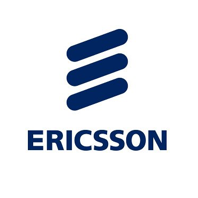Chipsets for 4G & 5G Highlights:
- 4 commercial 5G modem chipsets and 1 commercial processor/platform; more to follow soon
- 26 discrete cellular modem chipsets supporting LTE (three also supporting 5G)
- 139 mobile platforms or processors supporting LTE (including 1 that also supports 5G)
- 32 modem or platform chipsets supporting 3GPP IoT technologies
Since the last GSA Chipset report there has been further activity in the 5G chipset arena.
Hi-Silicon (Huawei) announced its first generation 5G-only Balong 5G01 cellular modem and, more recently, its second generation LTE/5G Balong 5000 cellular modem. A 5G version of its Kirin processor, the Kirin 990, has also been expected by industry commentators, though no official announcement has been made as far as GSA is aware.
Mediatek has announced the Helio M70 modem and more recently in May 2019 a multi-mode 5G system-on-chip (incorporating the M70 modem).
Qualcomm has announced the Snapdragon 855 mobile platform and the Snapdragon X50 and X55 modems. It also recently announced its 8cx 5G platform for laptops.
Samsung has announced its Exynos 5100 (S5T5100) modem
UNISOC (formerly Spreadtrum) has been widely reported for launching its IVY510 5G mobile chipset (also called IVYO510 in some literature). Analysis of company documents suggests this is a baseband chipset only, and so not covered by the analysis in this report.
U-Blox has announced a 5G-upgradeable chipset. Its UBX-R5 IoT chipset will in the future be (but is not currently) capable of supporting 5G with an OTA software upgrade.
Of these, we consider Qualcomm’s Snapdragon 855 platform and its X50 modem, the Samsung Exynos 5100 and Hi-Silicon Balong 5G01 and 5000 modems to be commercially available; all other 5G silicon listed we consider to be at a pre-commercial stage, though some samples may be shipping. The precise commercial status of these chipsets, and of mobile platforms that contain these modems, is difficult to confirm. MediaTek says that devices using its Helio M70 modem will be commercially available in 2019; samples of its SoC are due in Q3 2019 and the SoC is expected to appear in devices in Q1 2020. The Qualcomm X55 modem is expected to ship in 2H 2019.
Intel meanwhile has confirmed its withdrawal from the 5G mobile modem market. Its previously announced XMM8060 and XMM8160 cellular modems will not now be produced.
Information on performance of pre-commercial 5G chipsets is partial, but the peak downlink speeds for the commercial modems range from 4700 Mbps (for Mediatek’s Helio M70) to 6.5 Gbps (for Hi-Silicon’s Balong 5000). Qualcomm’s Snapdragon X55 is expected to have a peak theoretical throughput of 7 Gbps; Intel says its XMM 8160 will have a downlink speed of 6 Gbps, likewise the Samsung Exynos 5100. Maximum peak theoretical uplink speeds (where we have data) range from 1.5 Gbps to 3.5 Gbps. At least half the commercially available 5G-capable chipsets can support LTE as well as 5G services.
©2019 GSA


